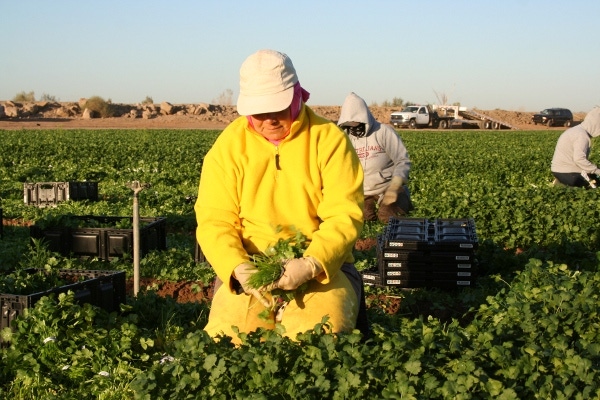
Rain delays crop production in northern and southern California;Drainage work continues in rice fields to remove excess water from rain;Citrus plants shipped across the country from Tulare County nurseries;The San Joaquin Valley almond bloom continues while blooming ends in the Sacramento Valley.
March 22, 2011

The latest California Crop Weather report from the National Agricultural Statistics Service Field Office in Sacramento, Calif. released March 21.
Weather
Rains continued across northern California as a series of relatively warm and moist Pacific storms pushed through that area at the beginning of the week (March 14 week). The storms brought widespread rain to the north.
Southern California received only occasional gusty northerly winds from the storms while temperatures in the south ran well above normal.
The pattern persisted until Thursday when the north saw a break in the weather. But this respite was short-lived as another stronger series of storms moved in late Friday night and Saturday morning followed by another storm on Sunday.
With the ground already saturated in the north and creek and river levels already high, the heavy
precipitation from the later storms caused some localized flooding. The storms were cold enough that a lot of the precipitation in the mountains fell as snow and did not contribute to the storm runoff.
Meanwhile in Southern California very heavy rains finally arrived during the weekend. Flooding developed as drainages were overwhelmed by the heavy runoff.
Field crops
Field work was postponed in areas that received heavy rainfall. Winter forage development continued along with wheat, barley, and oat crops. Irrigation took place in areas not affected by rain.
Dryland crops did well in areas with sufficient soil moisture. Herbicide applications resumed on small grain fields as weather permitted.
Alfalfa fields broke dormancy and were treated for broadleaf and grass control.
Drainage work continued in rice fields to remove excess water from rain.
Preparation in cotton and dry bean fields continued. Corn seed arrived in preparation for spring
planting. Spring field work continued with tillage and weed control where conditions allowed.
Fruit crops
The Navel orange, Valencia orange, grapefruit, mandarin, and lemon harvests continued in the San Joaquin Valley (SJV). Lemons and grapefruit were picked in the desert and coastal regions. Citrus plants were shipped across the country from Tulare County nurseries.
Pre-emergent herbicides were applied in Napa County grape vineyards along with ongoing
pruning. Blooming continued in stone fruit and cherry trees as bloom spray applications began.
Strawberry plants showed good development.
Nut crops
The SJV almond bloom continued while blooming finished in the Sacramento Valley. Bees were placed in blooming almond orchards. Fungicide applications were ongoing as weather allowed. Bloom sprays and fields were prepared for the upcoming walnut bloom.
Vegetable crops
Processing tomatoes were planted while carrots, cabbage, and some organic vegetables were
harvested in Kern County. Early squash was under hot caps. Bloom was expected soon in
Tulare County.
Broccoli and other winter vegetable harvests hampered by wet conditions continued in Fresno County. The SJV asparagus harvest was underway.
You May Also Like



